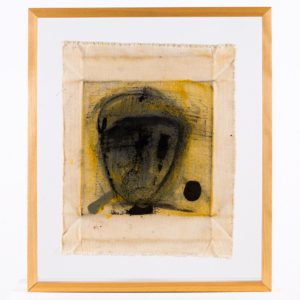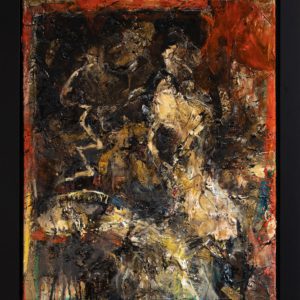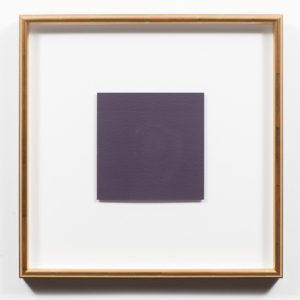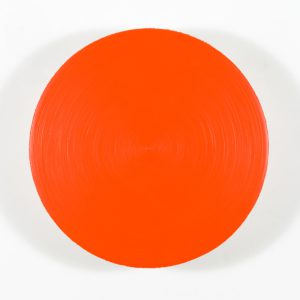Description
Known for his participation in the group Les Plasticiens, Fernand Toupin starts his artistic formation by taking drawing classes at Collège Mont-Saint-Louis in Montréal. He then studied at l’École des Beaux-Arts de Montréal. From 1949 to 1953, he works in Stanley Cosgrove’s workshop.
Toupin’s artistic career really begins in 1954. In 1955, he signs with Louis Belzile, Jean-Paul Jérôme and Jauran (Rodolphe de Repentigny) the Plasticiens’ Manifesto, written by Rodolphe de Repentigny. Opposed to the spontaneous and expressive art of the Automatists, Les Plasticiens endorse an art particularly inspired by Mondrian and will participate at a new painting movement’s emergence in Québec : the geometrical abstraction. Within this new movement, the image is considered like a bidimensional object that refuses any depth effect on the canvas. Fernand Toupin’s “shaped canvas” or “object-canvas” as the art critics named them, remain an important contribution from the artist to the movement.
In 1959, Toupin’s art engages in a new direction. Always interested by abstraction, the artist explores texture with a more abundant material on the canvas, where the pigments are mixed with marble dust. Toupin expresses his surrounding environment: Québec’s landscapes. “I like to feel the simmering of things as they are made. The uprising of the waves. The freshness of the snow. The ubiquity of the minerals.” In 1992, Fernand Toupin creates a series of small canvas, which will materialize this idea. The Écorces sous la neige (bark under the snow), are miniature artworks made of marble dust in which the artist has inserted small pieces of bark and other natural materials onto the canvas. These elements thus become small treasures carefully buried under the snow. Then, in 1993, he goes back to geometrical abstraction.
Parallel to his painter career, Toupin was the exhibition Director for the Association des artistes non-figuratifs de Montréal, from 1963 to 1974. In 1977, he is elected member of the Royal Canadian Academy of Arts (R.C.A). During the same year, he creates a mural titled “Hochelaga” for the venue Wilfrid-Pelletier of Place-des-Arts.
His paintings are part of numerous museums and public collections such as: Musée national des beaux-arts du Québec’s collection, the Musée d’art contemporain de Montréal, the Musée des beaux-arts de Montréal and the Musée des beaux-arts du Canada as well as in several private collections in Canada, United-States and Europe.







